Are you looking for a unique and creative way to spruce up your home décor? If so, why not try painting with stencils on wood? Not only is this an easy project that anyone can do regardless of their skill level when it comes to DIY crafting, but it also looks absolutely stunning.
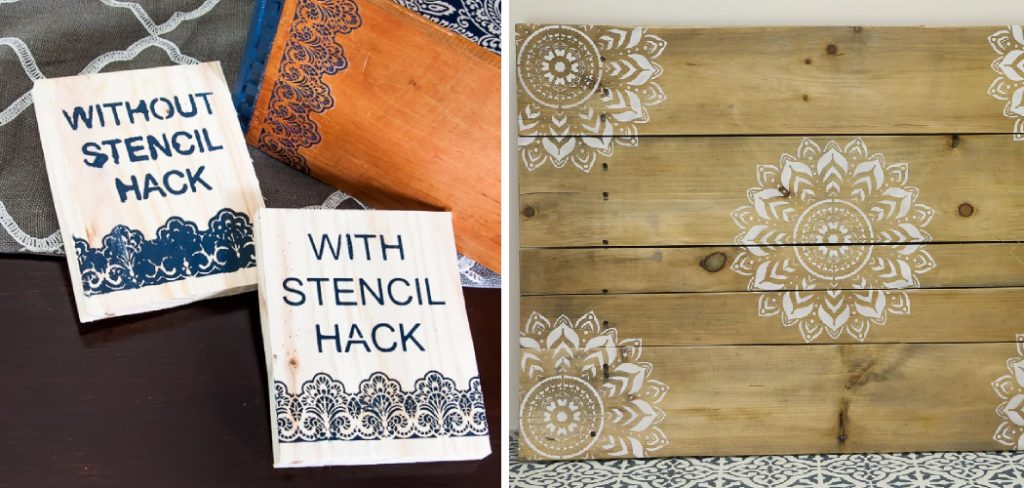
Plus, you can customize the design and pattern however you’d like in order to make it match your own personal style preferences. Here, we’ll be covering all the basics of how to paint with stencils on wood so that by the end, you’ll feel confident creating beautiful pieces yourself!
With the help of stencils, it’s easy to create detailed designs with colorful paints. Whether you have experience painting or are just getting started, this post will show you how to paint with stencils on wood – from choosing the right materials, creating an attractive design, and applying the perfect coat of paint!
Let’s take your artwork skills to new heights as we explore how fun and simple it can be to make beautiful pieces using stenciling techniques.
Why May You Want to Paint With Stencils on Wood?
1 . To Add a Professional Look
Painting with stencils is an easy way to give your wooden surface a professional and polished look. Whether it’s for decorative purposes, like adding a logo or sign to the wood, or functional considerations, like numbering boxes or drawers, painting with stencils can create a neat and uniform look that would otherwise be difficult to achieve with freehand painting.
2 . To Save Time
Using stencils to apply paint is much faster and more efficient than using a brush or other tool for painting. Stencils allow you to apply large amounts of paint in one go without having to worry about the paint running or bleeding, giving you even coverage in a fraction of the time.
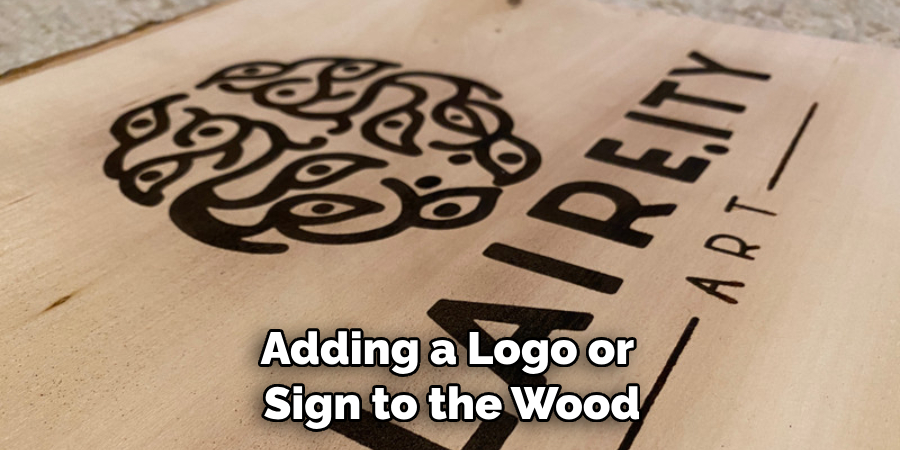
3 . To Create Complex Designs
Painting with stencils allows you to easily create intricate and complex designs that would otherwise be difficult to achieve in traditional painting methods. With the right kind of stencil, you can quickly and easily apply patterns or logos to your wood surface without having to worry about getting the proportions wrong or making mistakes in the design.
4 . To Increase the Durability of Paint on Wood
Using stencils to paint wood can also help increase the durability of the paint job. By using a thicker layer of paint and ensuring even coverage, you can create a strong bond between the paint and the wood that will last for years. This is especially helpful when painting wood surfaces that will be exposed to the elements, as it helps protect the wood from water damage and other wear and tear.
5 . To Achieve Consistency
The use of stencils can also help you achieve consistency in your painting projects. By using stencils, you can ensure that every design is identical and that no two designs have any differences. This is especially helpful if you’re creating multiple pieces that need to match perfectly, like a series of drawers or cupboard fronts, as stencils help you to achieve uniformity and perfection.
6 . To Create Unique Designs
The use of stencils also allows you to create unique designs and patterns that would otherwise be difficult to achieve with traditional painting methods. By using a combination of different stencils and colors, you can create complex and interesting designs that will stand out from the rest. Whether you’re looking for something modern or vintage, simple or intricate, stencils can help you quickly and easily create the look you desire.
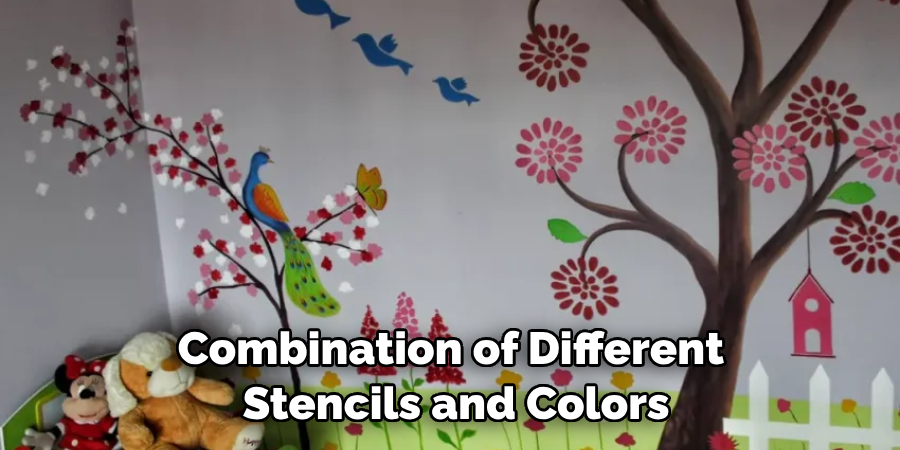
7 . To Make Clean-Up Easy
Finally, one of the major benefits of using stencils to paint wood is that clean-up is very easy. As all the excess paint will be contained within the stencil you don’t have to worry about getting paint on other surfaces or having to scrub off any mistakes. Simply remove the stencil and you’re done!
With all these advantages, it’s easy to see why painting with stencils on wood can be a great way to add a professional look and increase the durability of your paint job. So if you’re looking for an easy and efficient way to spruce up your wooden surfaces, give stencils a try!
How to Paint With Stencils on Wood in 7 Easy Steps
Step 1: Gather All The Tools
The very first step is to gather all the tools you need for painting with stencils on wood. This includes items such as a craft knife, sandpaper, paintbrush and paints of your choice, preferably oil-based. Additionally, you’ll also need a tape measure or ruler to ensure accuracy when cutting out your stencil design.
Step 2: Prepare The Wood Surface
Before you start painting with stencils, it’s important to make sure the surface of your wood is clean and smooth. This can be achieved by using fine sandpaper to gently remove any dirt or debris from the board. After this step, be sure to wipe down the wood before proceeding.
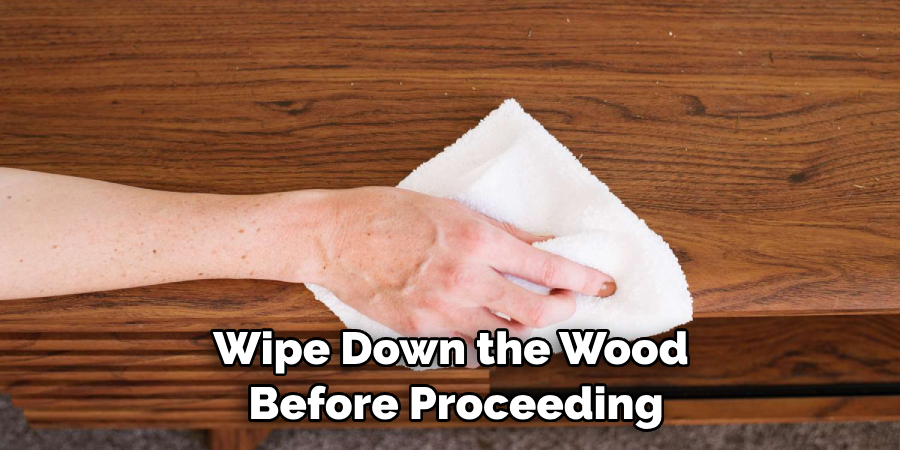
Step 3: Cut Out The Stencil Design
Next, you’ll need to cut out your stencil design from a piece of paper. To do this, use the craft knife and ruler to ensure accuracy when cutting. Make sure that all edges of the design are sharp and precise before removing it from the paper.
Step 4: Attach The Stencil To The Wood Surface
Once you have cut out the stencil design, it’s time to attach it to the wood surface. To do this, use a piece of tape to secure the edges of the paper and make sure that everything is in place before starting to paint.
Step 5: Begin Painting With The Stencil
Now you can begin painting with your stencil! Take a paintbrush and dip it in the paint of your choice. Start from the outside edges of your stencil design and use a light pressure to fill in the entire area. Be sure not to over-paint or you might accidentally smudge the design.
Step 6: Allow The Paint To Dry
After filling in all areas with your chosen paint, it’s important to let the design dry completely before removing the stencil. This will help you achieve a crisp and clean look for your finished product.
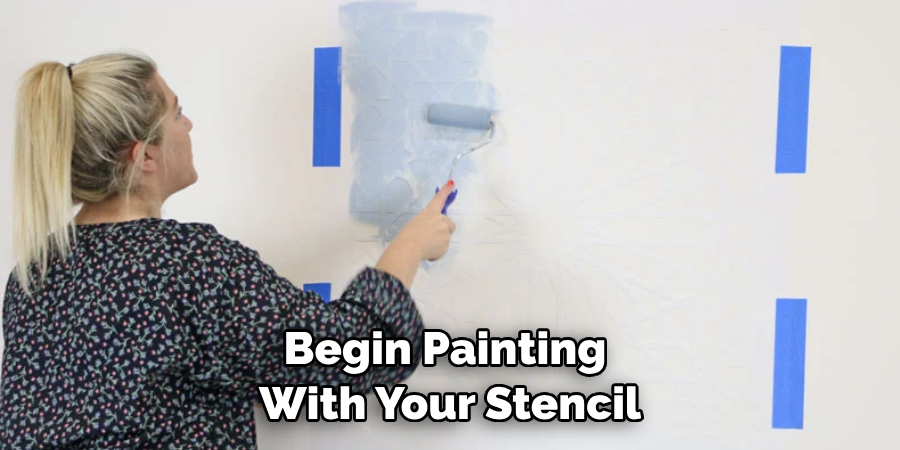
Step 7: Remove The Stencil And Enjoy!
Once the paint has dried, simply remove the tape and paper from the wood surface. If done correctly, your stencil art should be looking perfect! Now you can sit back and enjoy your hard work.
Some Extra Tips to Paint With Stencils on Wood
1 . Cut Your Stencil Design With Precision
If you are cutting out your own stencil, it is important to use a sharp craft knife and make sure that the cuts are precise. If your edges are too rough, this may cause paint to bleed through your stencil onto the wood which will ruin the design.
2 . Use High Quality Paint
Using high quality acrylic paints is essential when painting with stencils on wood. Low quality or cheap paints may not adhere to the surface of the wood, causing your design to look dull and faded.
3 . Consider Using a Primer
Using a primer will ensure that any paint you use adheres to the wood. It is much easier to work with and will give your design a more professional finish.
4 . Take Your Time
Painting with stencils requires patience and precision to get the best results. If you rush through the process, your design may look sloppy and uneven. Take your time when applying the paint and make sure each layer is completely dry before adding another one.
5 . Make Sure You Let It Dry
Once you have finished painting your design onto the wood, make sure it has completely dried before touching or using it. If there is any moisture left behind, this can cause your design to smudge and ruin all of your hard work.
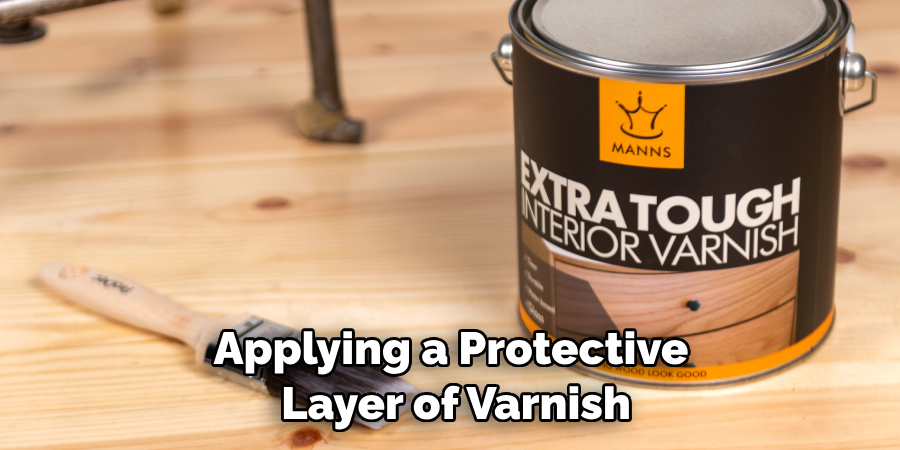
6 . Add a Protective Layer
Once your design is completely dry, consider applying a protective layer of varnish or sealant. This will ensure that your design is preserved for years to come and won’t fade or chip away over time.
7 . Experiment With Different Techniques
Painting with stencils on wood allows you to experiment with new techniques, such as combining different colors and adding texture to your design by using a sponge. Have fun and be creative with your design!
8 . Seek Inspiration From Others
Take some time to look through online galleries and Pinterest boards for some inspiration. Seeing how others have used stencils on wood can help give you ideas of how to use the same techniques in your own work.
By studying other’s designs, you can learn new tricks and also gain an appreciation for the art form. With enough practice, you will be able to create stunning pieces of art with stencils on wood!
Frequently Asked Questions
What Precautions Should Be Taken When Painting Finishes on Exterior Wood Surfaces?
When painting finishes on exterior wood surfaces, you should always take necessary precautions to protect the surface from damage due to extreme weather conditions. To protect wood from potential water damage, make sure it is properly sealed and painted with a waterproof finish such as an oil-based paint.
Additionally, be sure that the surface is properly prepared before painting, and that you use a quality paintbrush to apply the finish. It is also important to take extra care around areas prone to moisture, such as around windows and doors. Finally, it is helpful to use a top coat of clear sealant on any painted surfaces for added protection from outdoor elements.
How Do I Achieve a Professional Finish When Painting With Stencils on Wood?
To achieve a professional finish when painting with stencils on wood, you will need to take special care in the preparation of your surface. First, make sure that the wood is clean and free from dust, dirt, and other debris. Next, use a sandpaper to lightly scuff up the surface of the wood.
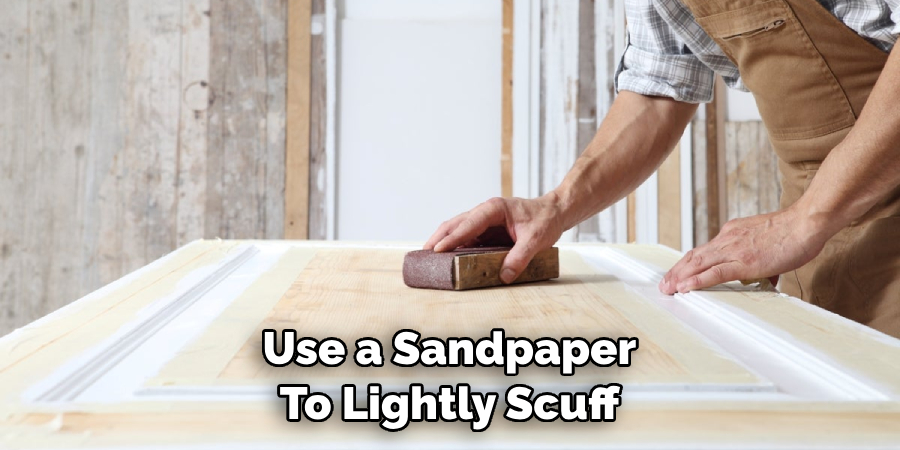
This will help create a better base for your stencil design to adhere to. Once the surface is prepared, you can begin painting with your chosen colors. Make sure that each layer of paint completely dries before adding another color and be sure to make any necessary touch-ups once all layers are complete. Finally, finish by applying a clear sealant to help protect your design.
What Are Some Tips and Techniques for Achieving Different Effects When Painting with Stencils?
There are a variety of techniques that can be used to create unique effects when painting with stencils on wood. For a more subtle look, try using multiple colors of the same shade and applying them in different directions.
You can also create a distressed look by lightly sanding the edges of your stencil after it has been painted. Additionally, you can experiment with blending and layering different colors to achieve more vibrant designs. Finally, for a more 3-dimensional effect, try using multiple layers of stencils in varying sizes.
Conclusion
Painting with stencils on wood can be a great way to add character and color to any piece of furniture. Not only is it easy to do, but it also opens up a world of possibilities in terms of creativity. Whether you opt for simple shapes or intricate designs, you can create anything from furniture makeovers to artwork. Plus, it’s an activity that the whole family can join in on and enjoy together.
Now you know how to paint with stencils on wood! Stenciling on wood can not only spruce up your home, but it can also add a unique and personal touch to any space – all at an affordable price. So go ahead and give this fun project a try! Who knows what creations will come out from you?

